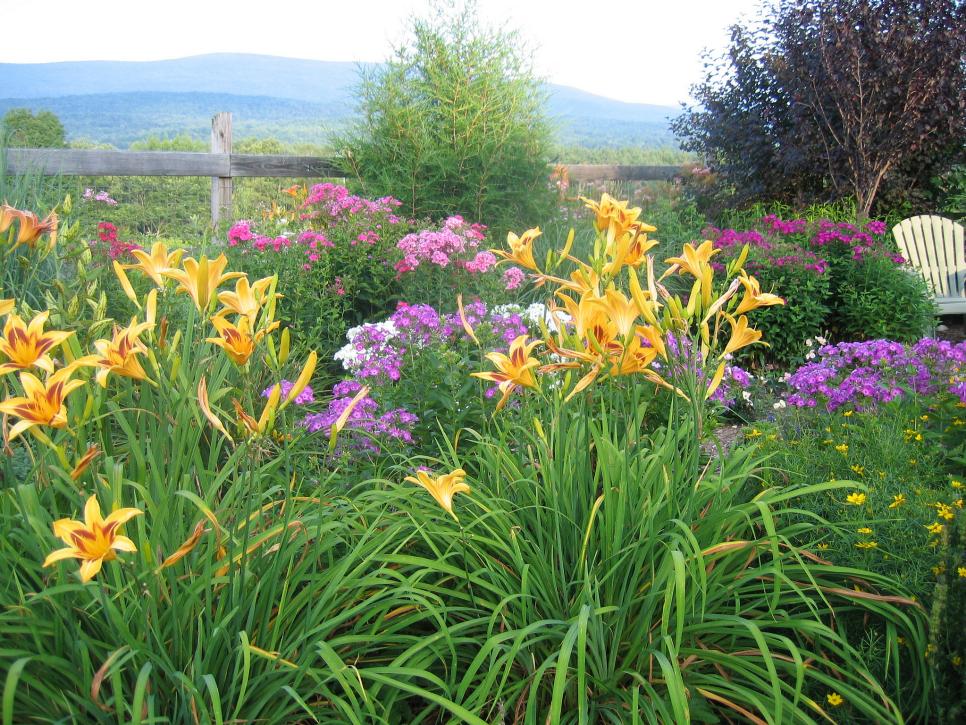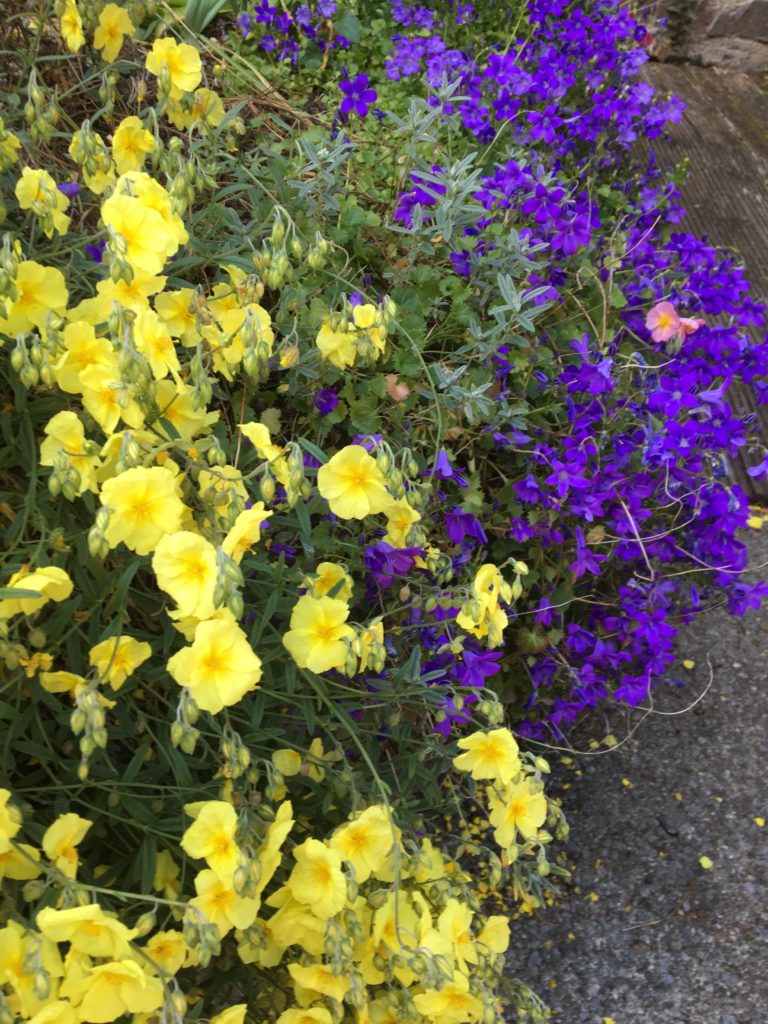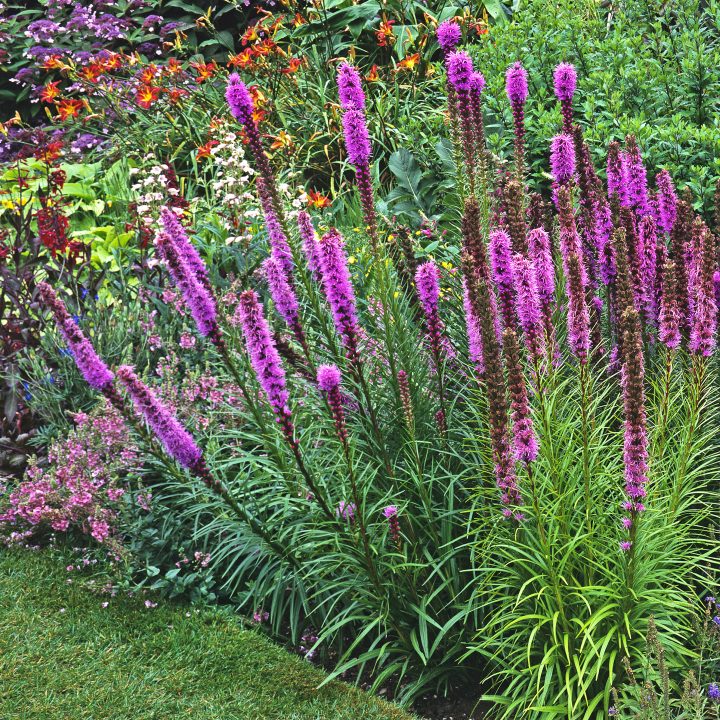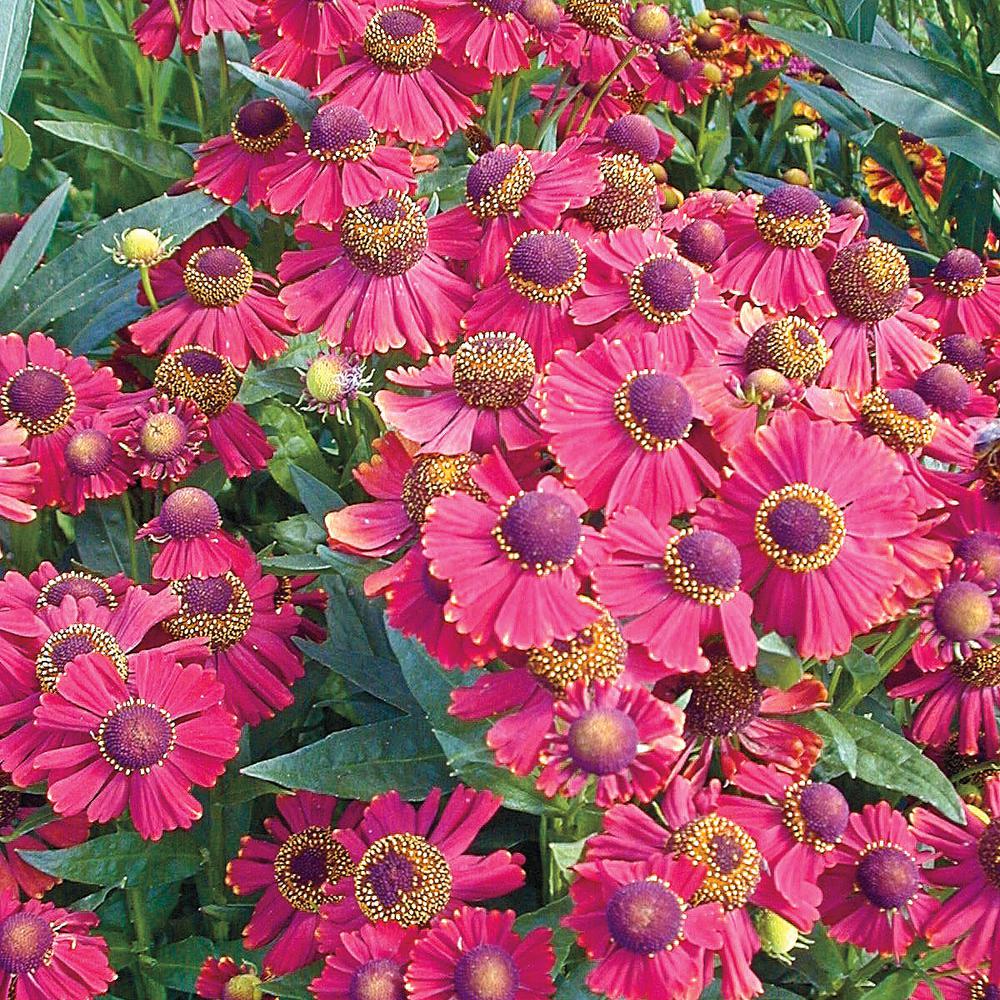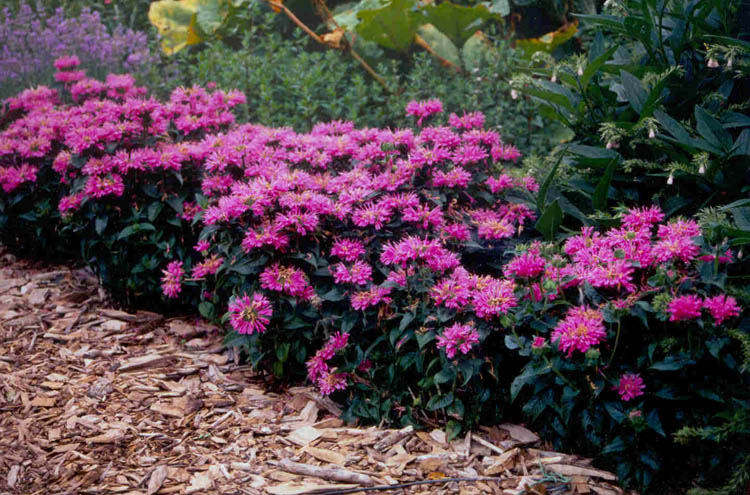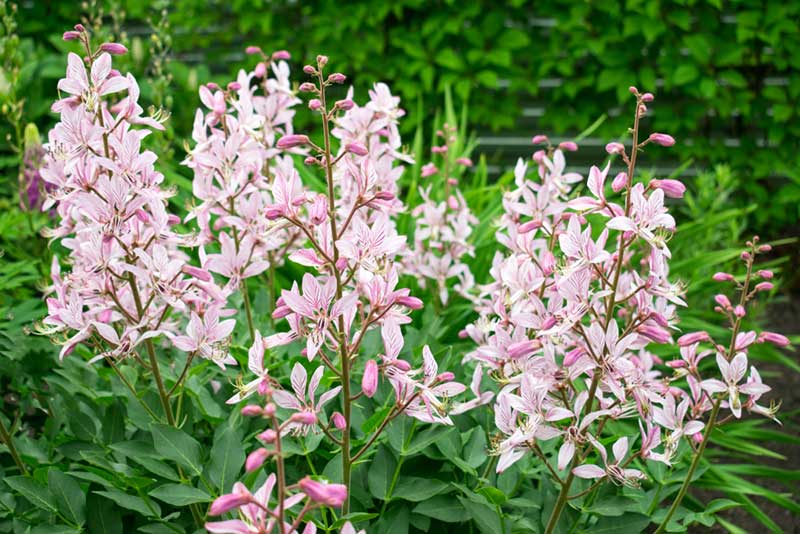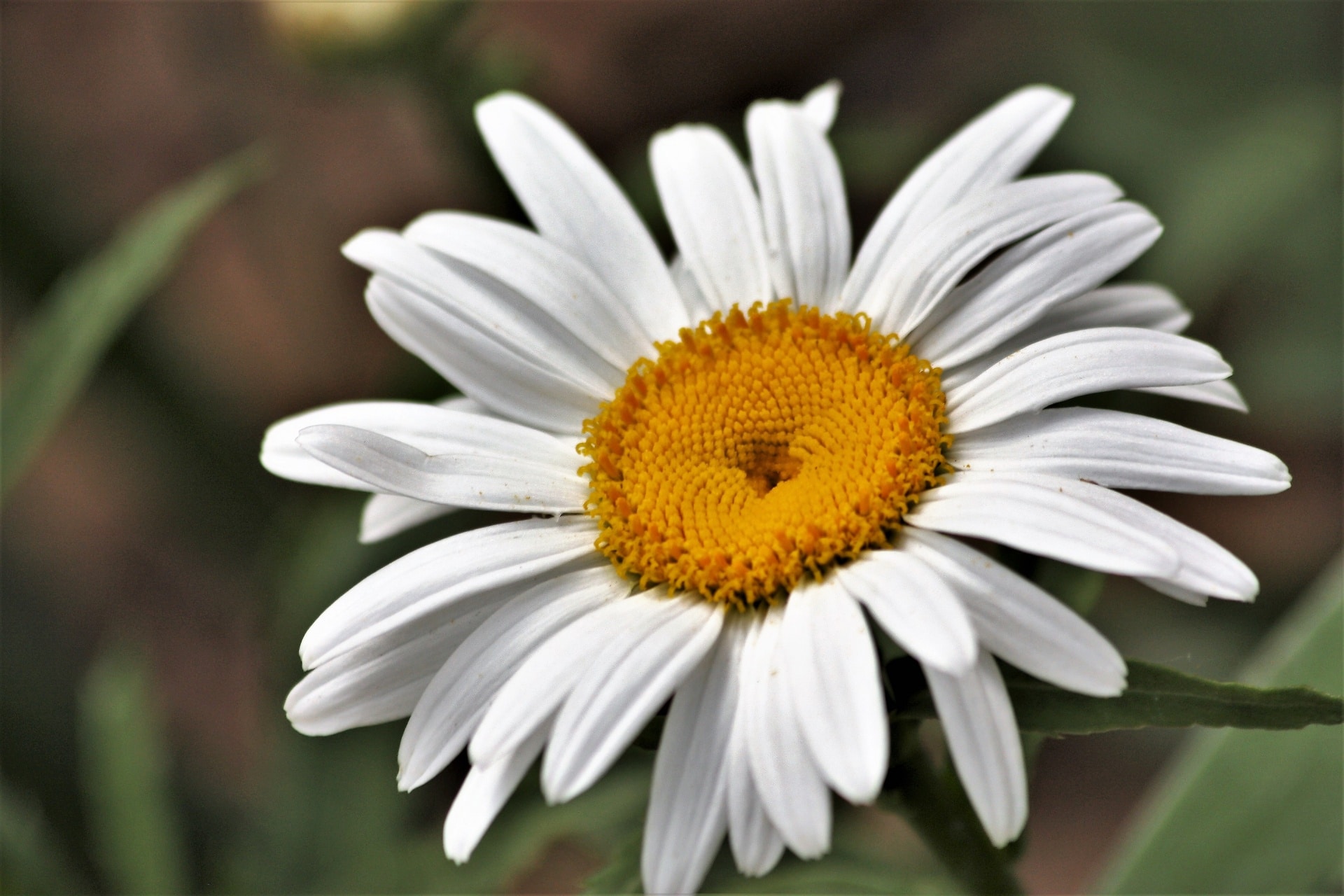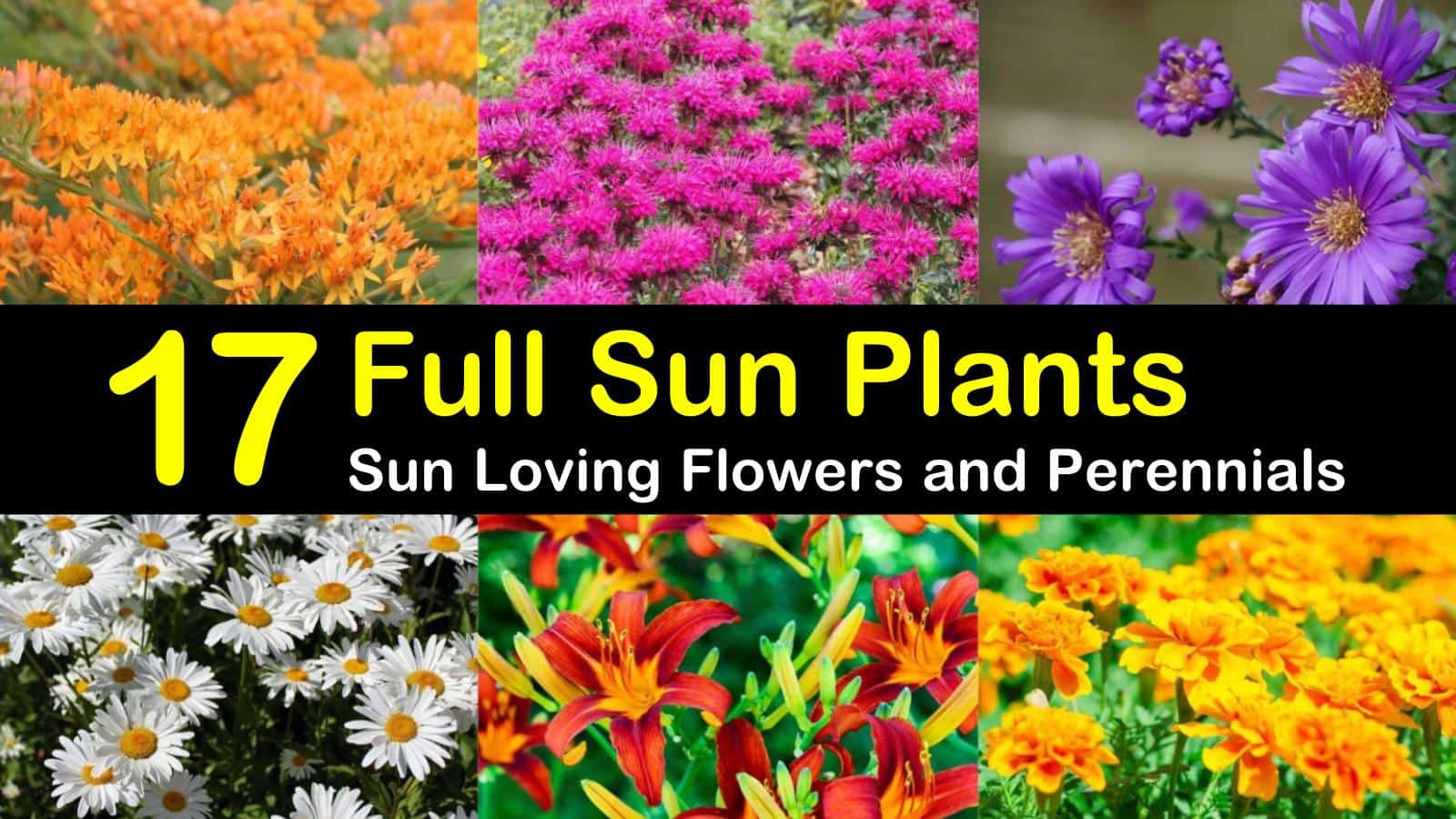Even if you've never gardened before, you can grow yarrow without much effort. Yarrow is a tough perennial that is hardy throughout most of the United States and can withstand heat, drought, and cold. This native perennial produces attractive spikes of tubular perennial flowers in pink, blue, lavender, white, or shades of red from late spring to early summer. Penstemon works best in the middle or back of the bed, but make sure it can get plenty of sunshine.
Perennial plants typically have a shorter blooming season, ranging from two to three weeks depending on the type. You can help offset this by planting flowers together that bloom early, mid-season and late for a continual splash of color. Brighten up your garden's shady spots with some butterfly and bird attracting full shade perennials. We also offer full sun perennials for those spots in your garden that get lots of sunlight. And if you live in a dry climate, check out our selection of drought resistant perennials. Like most irises, Siberian iris is a moisture-loving plant, but once established it'll tolerate dry soil.
These plants add color to flower beds in early summer, and vertical accents all summer long. The blooms appear atop leafless stems rising from the grasslike foliage. Colors include white, blue, yellow, and violet, with many bicolors.
In addition to brightening the garden, Siberian iris provides a steady supply of cut flowers. The salvia family includes both annuals and perennials that make beautiful garden plants. Hybrid perennial sage a relative of the herb garden favorite, is an especially pretty and easy-care plant. It produces 18-inch spikes of blue, purple, or white flowers in late spring. The variety shown here, 'May Night', is both cold-hardy and showy. The best times for planting perennial flowers are during the spring and fall.
Planting during these seasons will ensure your plants grow healthy and strong. In the spring, you have warmer soil, plenty of rainfall, and longer days with more sunlight. Your perennials will spend the entire winter growing strong roots, which will allow them to bloom bigger the following spring. The small leaves are slightly prickly, and the entire plant is covered with fragrant white, pink, blue, lavender, or red flowers in spring.
The foliage of this native plant is semi-evergreen in the North and evergreen in the South. For those shady corners of your landscape, you can always count on hostas. Colorful and reliable, these shade-loving perennials vary from 4-inch-tall dwarfs to 4-foot-tall giants.
Hostas grow well in containers, too, so try adding some of your favorites to a planter with a few shade-loving annuals, such as impatiens and begonias. For reliable summer color, you can't beat Asiatic lilies. These bright charmers are available in a cheerful variety of yellow, orange, red, white, cream, rose, purple, and bicolors. These lilies grow easily from bulbs planted in the spring or fall.
Each year, these vigorous plants form bigger and better clumps, which you can dig and divide to share with friends or spread around your garden. Some can be set out in late summer or early fall. These usually bloom for a shorter period of time, ranging from two to three weeks. You can stagger the flower show by planting a mix of perennials. Choose some that bloom early in the season, some in mid-season and some in late season. For extra color, tuck in annuals, bulbs and flowering shrubs.
Often sweetly fragrant, peony flowers are showstoppers because of their large size and bright hues. Numerous varieties offer a wide range of colors with some bicolors, and blooming periods from late spring to early summer. They make excellent additions to fresh cut bouquets if you can bear to remove them from your garden. Plus, peonies are very long-lived perennials that don't need a lot of care. The feathery plumes of astilbe rise above fernlike foliage for a month or more in late spring and early summer.
Available in shades of pink, white, and red, astilbes are some of the best perennials for shady, moist spots. Plant a swath of these perennial flowers for a memorable display year after year. A drought- and heat-tolerant perennial wildflower, blanket flower provides long-lasting color, even in spots with poor soil. In red, gold, or brown, its daisy-like, 3-inch wide, single or double perennial flowers bloom through the summer and into the fall. Although often short-lived, it's easy to grow and will flower the first year from seed. New gardeners always ask about the difference between annuals and perennials.
It's a very simple distinction, but one that people often confuse. Annual plants have a life cycle that lasts for one growing season. They tend to bloom all season long from spring until frost and are often quite showy and colorful. Their life cycle can last from three years or more (extremely hardy perennials can last up to 20 years!). In spring, you can prune out the dead leaves before the new ones start to develop. In many hardiness zones,'Burning Hearts' dicentra carries its deep red, heart-shaped flowers from spring through early summer.
Though unfit for heavy shade, hydrangeas deliver bountiful blooms in spring and summer, with some pretty fall foliage to boot. Remember to avoid planting perennials too near a tree whose roots might compete for soil nutrients. Available from The Home Depot; $29.97 for a one-gallon plant.
One of the longest-blooming perennials for your garden is pincushion flower . It produces dainty purplish blue flowers from spring into fall with deadheading. Each bloom sits atop a long, wiry stem, which seem to dance in a breeze. The ferny foliage stays lower to the ground, so you can place them toward the front of your flower bed or border.
A staple of the fall garden, asters burst forth with their starlike perennial flowers in late summer and autumn. Bloom colors include rich pinks, blues, purples, and ruby reds. They can soar to 5 feet, depending on the species, and are excellent for beds and borders as well as for cutting to bring indoors. Suited to larger gardens, this giant creates clouds of blue flowers in late summer.
Russian sage is a full sun perennial and is tolerant of drought and heat. Plant these perennial flowers at the back of the bed and give them room to grow. The 7-inch spikes of veronica bloom in shades of blue or red from early summer through fall. In the North, veronica prefers sun, but it likes a bit of shade in the South. Grow these perennial plants at the front of your flower bed.
This plant grows 4 to 6 feet high and 2 to 4 feet wide, spreads quickly, resists deer and tolerates drought. This native prairie flower produces large, airy clusters of pink or red blooms in late summer. The lovely arching stems and dangling pink, red or white heart-shaped flowers of this plant look delicate and dainty in a shade garden. This plant lives for many years and spreads to at least 3 feet wide and 3 feet high. Plant it in moist, slightly acidic soil in partial shade. Start phlox in the spring, and the fragrant flowers will open into late summer.
This easy-to-grow perennial, Super Ka-Pow Fuchsia, stays compact and takes full sun. Plants in this series also come in lavender, white, coral and pink. Cheerful marigolds are easy to grow in sunny spots, brightening your garden with shades of yellow, red and gold as they bloom all summer long. African or American type marigolds grow 3 to 5 feet tall, but you can find shorter and more compact varieties. While some plants demand the sun's full attention to endure, others thrive in the low-key light of the shade. Like all plants, shade perennials need water and the appropriate soil for survival, but they require little to no sun to reach and maintain their full potential.
We tapped our favorite experts to share with us which shade perennials you should use to transform your sun-deprived plot into a gorgeous garden. Though it doesn't flower, shade-loving caladium will treat you to robust foliage color all summer long. With varieties ranging from white, to dark reds, and brilliantly variegated, this bulb will not disappoint. Hellebore is essentially evergreen and ever easy to care for. They love shade, but will tolerate part sun in most planting zones. Known commonly as lungwort, pulmonaria has a reputation for being one of the easiest, low-light perennial plants for shade.
Growing 6 to 12 inches tall, and blooming in blues, pinks, and whites, it makes an excellent ground cover to complement other early spring bloomers, like daffodils. Daylilies come in a seemingly endless selection of colors and flower types and will flourish in almost any situation. Although they are sun worshippers, they will still produce flowers when grown in light shade. Daylilies are also tolerant of a wide range of soil conditions and won't slow down even during times of drought. Some daylily varieties bloom on and off all summer, while others will put on a big dramatic show once a year.
They don't need to be coddled to survive as long as you keep weeds at bay. A gorgeous North American native prairie grass, switchgrass offers the garden multi-seasonal texture and easy maintenance. Most varieties grow 2-6 feet tall and produce showy seed plumes from mid-summer into fall. Some also have rich red or purple foliage in autumn. In addition to perennial flowers and perennial plants, we also have lily bulbs, flower bulbs, garden flowers, rose bushes, daisies, lilies and hydrangeas. If you're not sure where to begin with your perennial plants, our How-To Guides can help point you in the right direction.
We can also give you planting and maintenance tips for your perennial plants. Enhance your garden's look and beauty with the foliage of perennial plants and long-lasting perennial flowers. Your garden's color will pop with stunning flowering perennials. Are you inspired to choose perennials for your spring garden?
In addition to the ideas above, use our Plant Finder to explore many other ideas for planting perennial flowers and plants. The ideal soil for planting has a rich, dark color , is loose and breaks apart easily, and drains well. Unfortunately, not everyone's garden is overflowing with healthy soil.
Instead, you might find your garden has dry, sandy, clay, or rocky soil. This doesn't mean your perennial plants are doomed. There are several varieties that can grow successfully in less-than-ideal soil.
Want to attract good bugs like bees and butterflies, while deterring the bad ones? Then bee balm, also known as Monarda or horsemint, is the plant for you. Simply crush its leaves to release the fragrant oils. Plus, you'll get to enjoy colorful flowers, in shades of red, pink, lavender, white, or purple, all summer long.
This plant grows 4 feet high and spreads quickly. It tolerates dry conditions and poor soils and produces pink, white or lavender blooms from mid-summer to frost, long after most perennials have puttered out. The mum will grow and bloom for a long time if you just give it enough water and don't let the soil dry out. After it has bloomed cut off the spent flowers to encourage more buds.
Mums grow best with full morning sun, at least 5-6 hours daily. Water when the soil feels dry and add more mulch before your average first fall frost date. You can prune the mums in the late fall or in the spring.
It's also adviced to pinch off the tops of stems in the spring to ecourage bushier growth and more flowers. Add some compost and/or aged manure to the soil in the spring. I bought some potted mums from Home Depot in early October here in middle TN. I kept deadheading them every other day, watered them, and kept them in full sun. After cutting my last bloom, they are all now blooming again.
But now that they are blooming again, should I wait to put them away in the garage when frost first appears on the ground? Nearly carefree columbines come in yellow, orange, red, purple and bi-colors. Plant them in sun or light shade for flowers into early summer. 'Songbird Cardinal' columbine has upturned blooms, rather than the usual nodding flowers, so you — and hummingbirds — can see them more easily. The fleshy leaves and spectacular flowers make tall sedum a popular perennial. It's practically foolproof as long as the soil doesn't stay overly moist.
It blooms toward the end of summer into fall when most other flowers are fading. Plus, the dried flower stems add winter interest if you leave them in place. Native to North America, you'll find perennial coreopsis in a range of sizes and several colors from yellow and white to pink and red.
Two of the best types for flower gardens are the threadleaf varieties like 'Moonbeam' and 'Zagreb' and large-flowered varieties like 'Early Sunrise'. Both produce small daisy-like flowers all summer long if deadheaded, drawing plenty of pollinators. This native prairie wildflower looks especially beautiful when you plant the 'Magnus' variety, which throws its petals out horizontally, daisy-style. Coneflower tolerates heat and drought, and it blooms all summer long. Plant these tall perennial flowers in the middle or back of the bed. Phlox paniculata produces large trusses of fragrant perennial flowers from summer to early fall.


